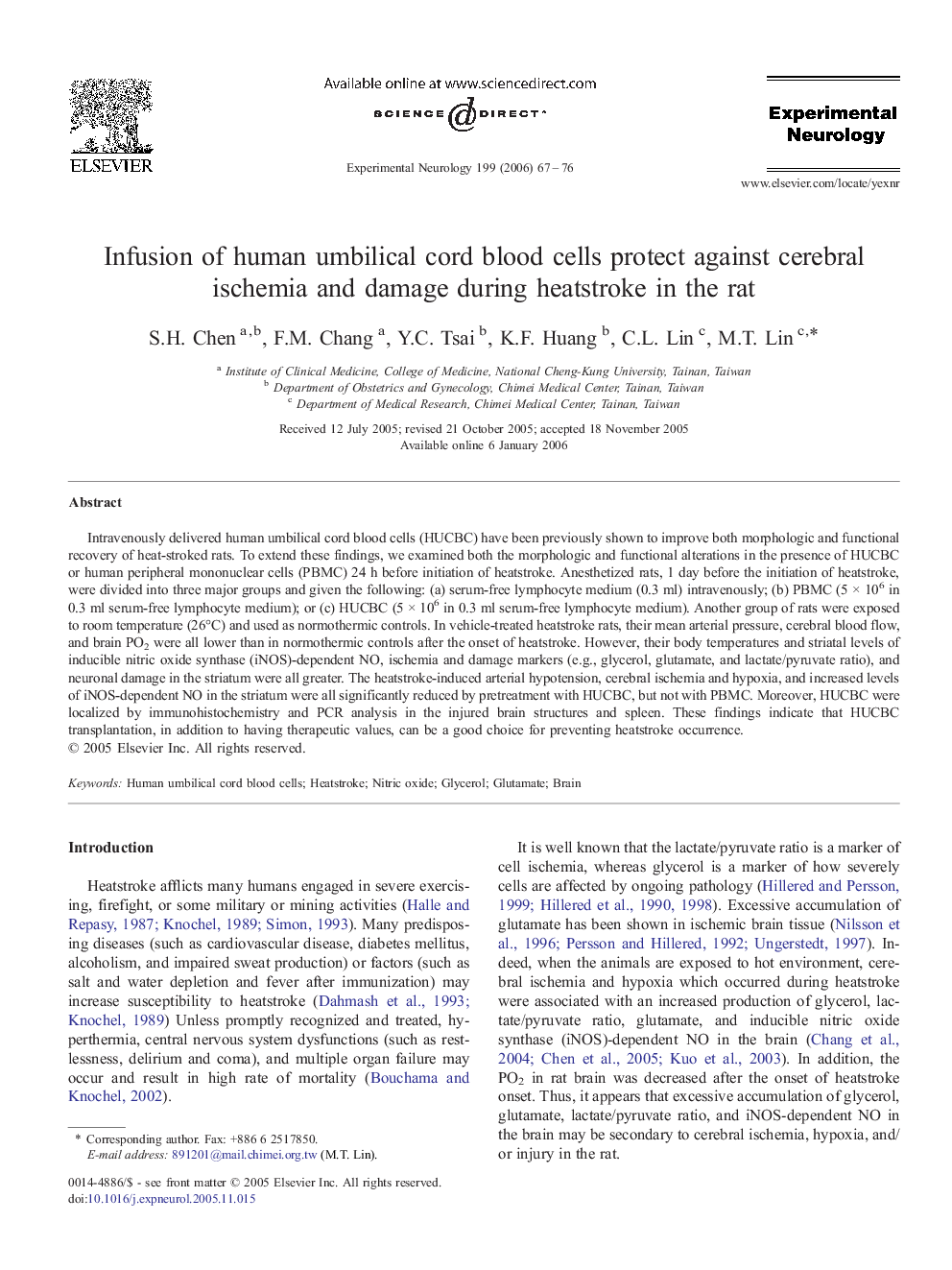| Article ID | Journal | Published Year | Pages | File Type |
|---|---|---|---|---|
| 3057604 | Experimental Neurology | 2006 | 10 Pages |
Intravenously delivered human umbilical cord blood cells (HUCBC) have been previously shown to improve both morphologic and functional recovery of heat-stroked rats. To extend these findings, we examined both the morphologic and functional alterations in the presence of HUCBC or human peripheral mononuclear cells (PBMC) 24 h before initiation of heatstroke. Anesthetized rats, 1 day before the initiation of heatstroke, were divided into three major groups and given the following: (a) serum-free lymphocyte medium (0.3 ml) intravenously; (b) PBMC (5 × 106 in 0.3 ml serum-free lymphocyte medium); or (c) HUCBC (5 × 106 in 0.3 ml serum-free lymphocyte medium). Another group of rats were exposed to room temperature (26°C) and used as normothermic controls. In vehicle-treated heatstroke rats, their mean arterial pressure, cerebral blood flow, and brain PO2 were all lower than in normothermic controls after the onset of heatstroke. However, their body temperatures and striatal levels of inducible nitric oxide synthase (iNOS)-dependent NO, ischemia and damage markers (e.g., glycerol, glutamate, and lactate/pyruvate ratio), and neuronal damage in the striatum were all greater. The heatstroke-induced arterial hypotension, cerebral ischemia and hypoxia, and increased levels of iNOS-dependent NO in the striatum were all significantly reduced by pretreatment with HUCBC, but not with PBMC. Moreover, HUCBC were localized by immunohistochemistry and PCR analysis in the injured brain structures and spleen. These findings indicate that HUCBC transplantation, in addition to having therapeutic values, can be a good choice for preventing heatstroke occurrence.
